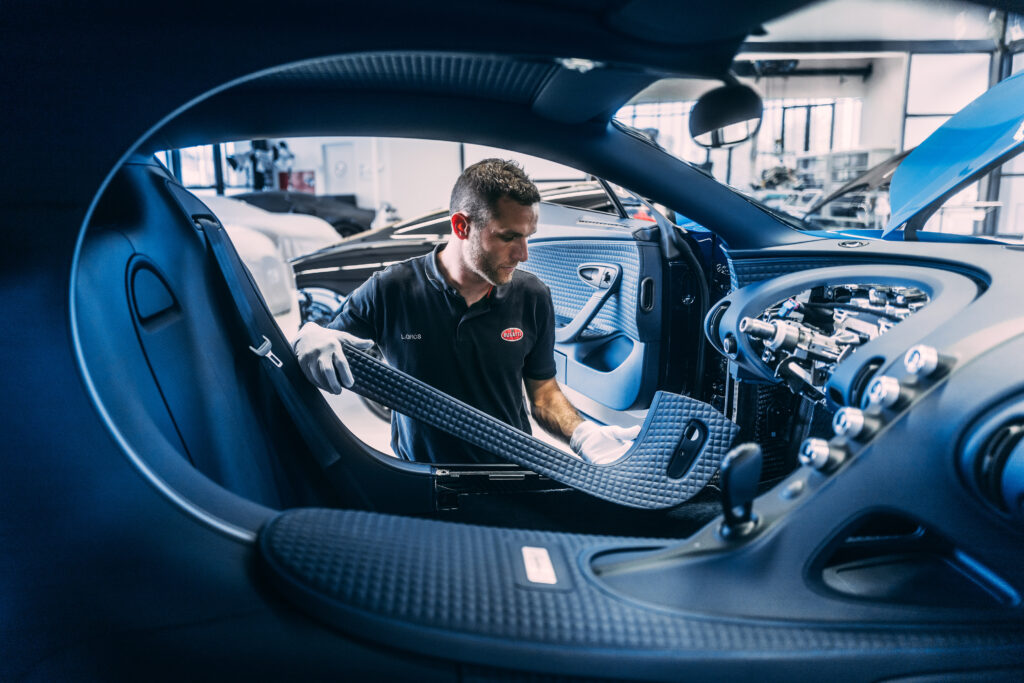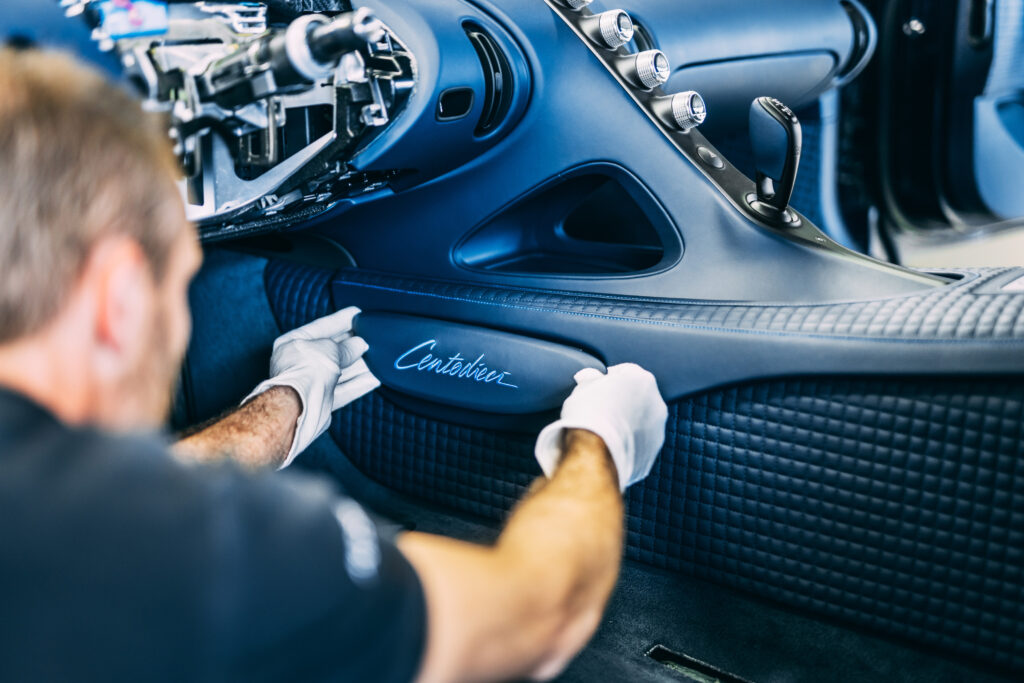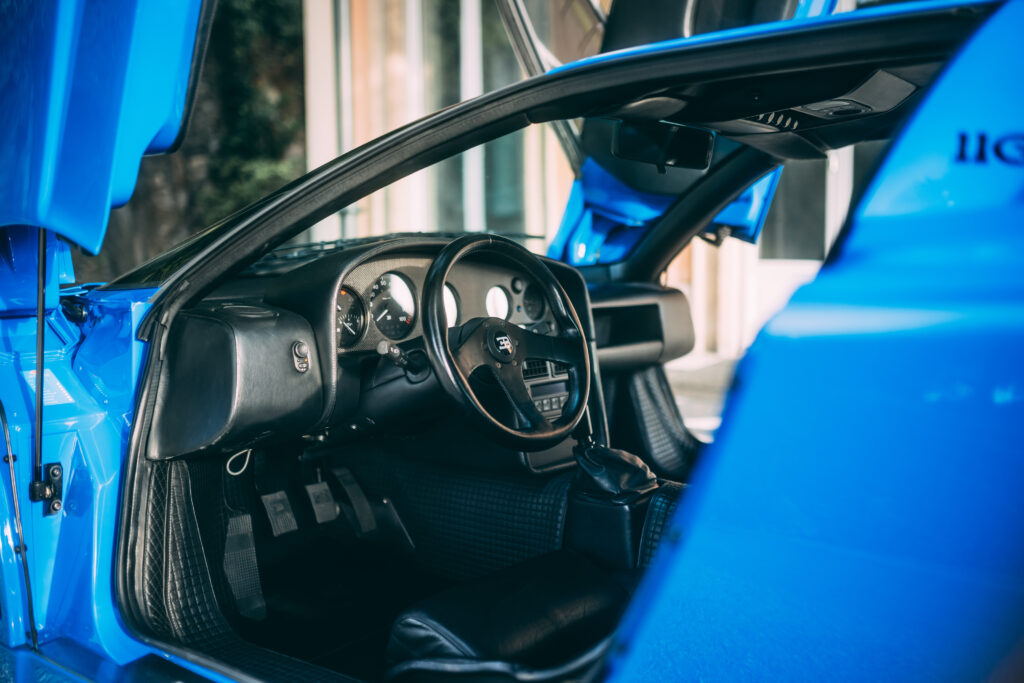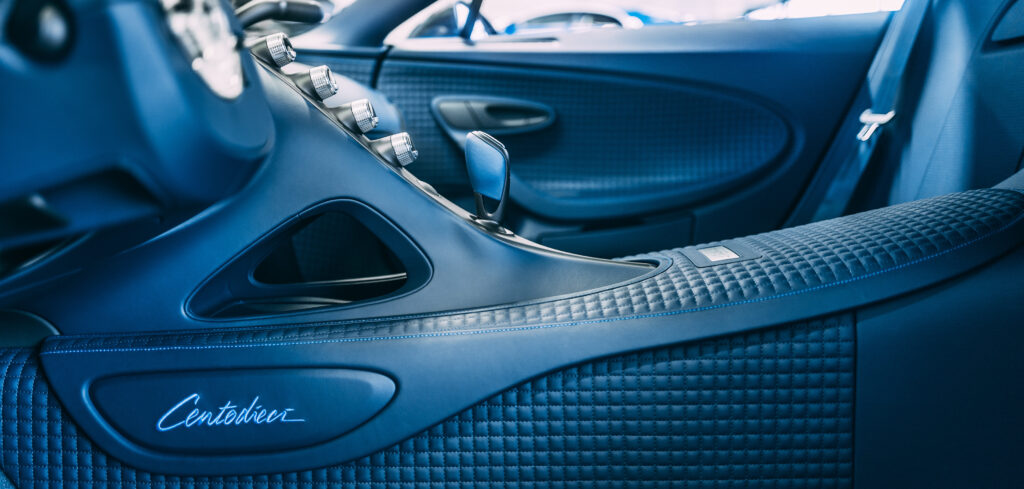Bugatti has outlined the work that has gone into creating the interior of its latest Centodieci model, inspired by the company’s EB 110 Super Sport of the 1990s.
For example, the designers and engineers created the door panels, instrument panels and center tunnel in the style of the 1990s super sports car. “With the elegant, quilted pattern and perforations, we oriented ourselves toward the Centodieci’s historical predecessor, the Bugatti EB 110 in its Super Sport design. In this way, we are bringing the styling of the top model in the EB 110 series into the 21st century and are reinterpreting it with high-quality leather, carbon and aluminum, as well as modern design,” explained Jörg Grumer, head of color and trim at Bugatti Design.
Bugatti developed the shapes, parts and workmanship processes from scratch in just under a year. As with all coach-built models, the key elements of the interior were customized for the Centodieci, including the armrests, door panels, tunnel overlay, sill trims, roof liner, floor mats, rear panel and seats. Taking the tried-and-tested, comfortable Bugatti sport seat as the basic structure, the developers created a new surface with a new look and feel. “The seat feels different and yet familiar,” said Dirk Buhre, interior development engineer at Bugatti, who is responsible for the interior of the Centodieci.
It takes around 16 weeks for each interior to be completed. Bugatti’s craftsmen need more than four days alone to produce the headrest embossing, cut the leather to size and precisely assemble everything. They then set aside a day to inspect the quality of the finished item.
Bugatti notes that there were challenges in creating many details such as the Centodieci pattern on the seats, roof liner, door panels, center console and floor mats. The precise quilting creates a chessboard effect and is designed to look uniform and composed. “This is very difficult to achieve due to the curvatures and radii,” explained Buhre.
“Newly developed vehicles like the Centodieci are a major challenge as, even with a few-off of just 10 vehicles, we have to meet and also want to exceed the same quality and safety standards that apply to series production vehicles,” added Buhre.
To this end, the engineers tested the prototype of the Centodieci in extreme heat and cold, and put the hyper sports car through more than 50,000km of endurance testing. In addition to the parts’ durability and accuracy of fit, the development drivers pay attention to the acoustics. No parts should cause any undesirable noises. “Our customers expect an extremely high-quality and exclusive interior. We appeal to all the senses – design, look, feel, acoustics, even the sense of smell. Bugatti enthusiasts will immediately see the similarities between the EB 110 and the Centodieci,” concluded Grumer.






